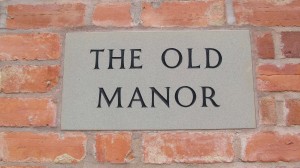
For much of the medieval period the manor was both the residence of a local lord and an administrative unit.
Manors varied widely in size and structure. Some were coterminous with the parish, or contained an entire village. Others included several villages, or parts of villages, either As a continuous sweep of land or including one or more detached portions; conversely, some villages were divided between several manors. A survey of Leicestershire manors was made in 1279. Known as the Hundred Rolls, the details collected survive for around half of the county, and include information about the manorial structure of 134 Leicestershire villages. As historian R.H. Hilton explained in 1949,
‘We see manors within the village which bear no resemblance to our preconceived idea of what a manor should be like. We see groups of tenants in one village who are part of a manorial organisation centred in another village.’
Among the 134 villages for which details survive, he found that:
Just 28 villages had just one manorial lord and had both demesne and tenant land
8 more villages had one manorial lord but no demesne
Only 1 village had one manorial lord and no tenant land
11 villages had two manors with both demesne and tenant land
23 other villages had two manorial lords
As many as 63 of the 134 villages (almost half) had tenants owing rents and services to three or more lords.
[from R.H. Hilton, ‘Kibworth Harcourt: A Merton College manor in the thirteenth and fourteenth centuries’, in W.G. Hoskins (ed.) Studies in Leicestershire Agrarian History (Leicester, 1949)]
It was not just the nature of their geographical territory that differed, but so too did their social structure. Some manors consisted entirely of demesne land (under the direct control of the lord, and perhaps cultivated through the labour services provided by unfree tenants), while others had tenants but no demesne. A cursory glance down one page of a Domesday Book translation shows that different places in Leicestershire had different mixtures of free and unfree tenants, and this continued to be the case throughout the middle ages. The lord himself could be resident or non-resident, and could hold one manor or many, sometimes spread across many different counties.
An understanding of the local manorial structure is relevant to all periods of a village’s history. The early social structure, established many centuries ago, may still be reflected in the character of the village today, for example in the number of places of worship or the number and range of shops, which both tend to be greater in places with more free tenants or freeholders and weaker manorial control.
Because of its function as an administrative unit, the manor created documentary records. However, modern, non-documentary sources need to be treated with caution. Signs displayed proudly on a door or gate can mislead. Manor Farm or The Old Manor may not be the direct successors of a medieval lordship, and the title of lord of the manor is available to buy.
In past centuries the manor courts provided a means for a lord to manage his property and for community activities to be regulated, ensuring people performed their legal and customary obligations to their lord while helping them to live in harmony with each other. There were two types of court: the court baron and the court leet. Through the manor courts agreement was reached, for example, on the number and type of animals that individuals were allowed to graze on common pasture. They also registered title to copyhold land (which survived in a few places until 1926), allowing individual holdings to be reconstructed and family histories traced. The tenant received a copy of the court roll as proof of title. Where they survive, manor court records therefore allow us to understand everyday village life and learn about the communities who lived there. Although it contains no Leicestershire records, the Cumbrian Manorial Records project includes a useful introduction to manorial records.
